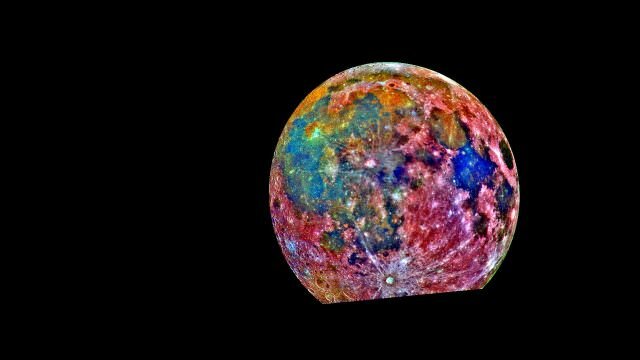Last updated January 11, 2018 at 10:41 am
Scientists believe they have solved the mystery of the cold vortex above the south pole of Saturn’s largest moon, Titan, that ushered in a sudden winter in 2012.
Titan, the largest of Saturn’s moons, is the only moon known to have a dense atmosphere. Credit: NASA
Using data collected by NASA’s Cassini probe researchers analysed Titan’s dense atmosphere of nitrogen and methane and concluded that a sudden cooling of a hot spot near the moon’s south pole drove the formation of a strong winter polar vortex, possibly due to increases of trace gases in the atmosphere.
The gases are thought to have reacted in sunlight to generate compounds such as ethane, acetylene and hydrogen cyanide that absorbed heat radiating it away from the moon, causing a cooling effect which lasted until 2015.
The vortex some 300 kilometres above Titan’s south pole was unexpected, but became so cold that clouds of hydrogen cyanide ice formed there. Temperatures plunged to -153 °C – very cold, even by Titan’s standards.
The findings were reported in Nature Communications.
Polar hot-spots form in the upper atmosphere every season on Titan after the spring equinox in a process unique to the moon.
“On Titan large abundances of radiatively active trace gases have the potential to significantly modify the energy balance within the south polar vortex,” the researchers from the University of Bristol in the UK, write.
“This does not happen on the other terrestrial planets—Earth, Venus, and Mars—as the major atmospheric cooler on those planets is CO2, which is uniformly mixed so is not enhanced by subsidence at the winter pole.”
However, signs are that warmer times may be on the way. the last observations made by Cassini between 2016 and 2017, before it burnt up in Saturn’s atmosphere, suggest a return of the hot-spot may be occurring.
Meanwhile, NASA has released a mosaic of the last images Cassini took of the Saturn system before the end of its mission. A total of 80 wide-angle images were acquired in just over two hours.
The mosaic image assembled from the last images captured by Cassini after more than 13 years observing the Saturn system. Credits: NASA/JPL-Caltech/Space Science Institute
The image above is constructed from 42 of the wide-angle shots, taken using the red, green and blue spectral filters, combined and mosaicked together to create a natural-colour view.
Six of Saturn’s moons – Enceladus, Epimetheus, Janus, Mimas, Pandora and Prometheus – make a faint appearance in this image.

































































































































































































































































